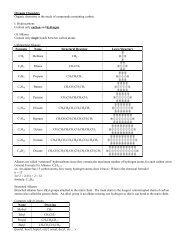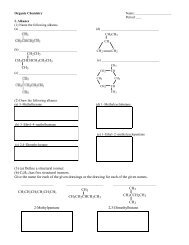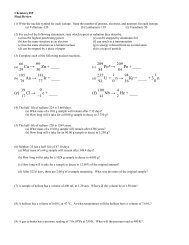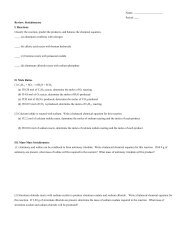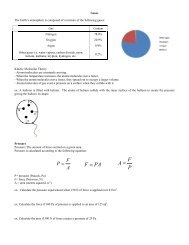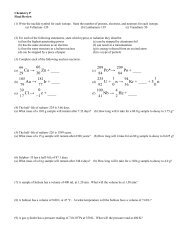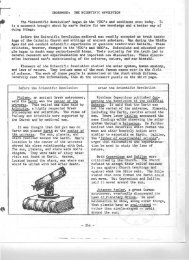Am His AP Review.pdf - yourhomework.com Home Page
Am His AP Review.pdf - yourhomework.com Home Page
Am His AP Review.pdf - yourhomework.com Home Page
Create successful ePaper yourself
Turn your PDF publications into a flip-book with our unique Google optimized e-Paper software.
Congregationalists (Puritans) – The Puritans simply believed that the Anglican Church wastoo Catholic and needed to be purified. The Puritans were also essentially Calvinists.- Eventually the area filled out with many other people, who were not necessarily Pilgrims or Puritans andsimply came for economic reasons, and so on. Nevertheless, the leaders of the initial colonists left anindelible imprint on the region – their idealism persisted for decades at the very least.*The Pilgrims*- The colonization of New England began when in 1609 a Separatist congregation moved to theNetherlands, where they could practice freely. They disliked the Netherlands, however, b/c toleration alsomeant that many other religious sects unacceptable to the Separatists were about.- Consequently, they obtained permission from the Virginia Company to colonize New England and left inSeptember 1620 on the Mayflower with a whole bunch of non-Separatists. To make sure that they wouldstill be in <strong>com</strong>mand when they landed, the Separatist leaders drafted the Mayflower Compact.- The Mayflower Compact established a “Civil Body Politic” and basic legal system. It also described thebelief that the Pilgrims had made a covenant w/God, which meant that they had to create a new utopiansociety – they were egalitarians [only for church members] and believed in <strong>com</strong>munalism.- Anyhow, the Pilgrims finally landed on November 21, 1620. They named their town Plymouth. But, onceagain, they had a tough time at the beginning [as they were poorly prepared for the climate].- They were only saved when the Pokanokets [led by Massasoit], a local Indian tribe that had lost manypeople in an epidemic and were threatened by their neighbors, decided they would be useful allies.*The Puritans*- As the Pilgrims struggled to survive and create their small town <strong>com</strong>munity, though, another group arrivedand established colonies that would eventually <strong>com</strong>e to dominate New England and absorb Plymouth in1691. This second group was headed by Congregationalists, who were threatened by Charles I, who hadbegun trying to wipe out Puritan practices in the country.- Subsequently, a group of Congregationalist merchants obtained a royal charter in 1629 and formed theMassachusetts Bay Company, which soon attracted middle-class Puritans who were concerned about thedeteriorating situation in England. Although they remained <strong>com</strong>mitted to reforming the Anglican Church, theyfelt they would be better able to continue in <strong>Am</strong>erica.- Therefore, the merchants decided to transfer their headquarters to <strong>Am</strong>erica. Led by John Winthrop, whowas elected governor in October 1629, the Puritans set off towards New England in 1630 on the Arbella. Onthe way, Winthrop explained his vision for the colony in a sermon, “The Model of Christian Charity.”- Like the Pilgrims, he also stressed <strong>com</strong>munity, equality, and their covenant w/God, which required them tocreate a model “city upon a hill.” Later on, more formal institutions echoed the ideals expressed in thespeech, for the General Court, which originally governed the Company, was changed into a coloniallegislature. Soon enough, the system was <strong>com</strong>plete w/a governor and full two-house legislature.*The Expansion of the New England Colonies*- Three types of towns developed in New England: agricultural towns that attempted to sustain Winthrop’s<strong>com</strong>munalist ideas, seaports/trading centers, and <strong>com</strong>mercialized agriculture towns.- Furthermore, the colonists spread out over the years, founding Connecticut (1636), New Haven (1638),and New Hampshire (1638). But migration inevitably led to conflicts with the Indians. For instance, the firstcolonists to move to Connecticut under Thomas Hooker faced the Pequots, who realized that the arrival ofthe colonists would threaten their role as middlemen between other Indian groups and the Europeans.- The Pequot War began with the death of two English traders [not by Pequots], which caused an Englishraid on a Pequot village. The Pequots then attacked in April 1637, and a Massachusetts Bay expeditionresponded by burning the main Pequot town and pretty much wiping them out.- For the next 30 years the Indians allowed the Europeans to spread over their territory, although they neverblended into European society and most colonist didn’t bother trying to convert them, with the exception ofJohn Eliot [who wasn’t really successful anyhow b/c he demanded the Indians totally reject their roots].*Contrasting Lifestyles in the Chesapeake and in New England*- Not surprisingly, due to climactic and cultural reasons, life was very different in the two sections of thecountry. The most significant differences include… The importance of religion – It was not until the 1690s that the Church of England really tookroot in Virginia, and even then it was never an essential part of society. In New England,though, religion was central to all aspects of life; strict moral codes prevailed and anyone who3



